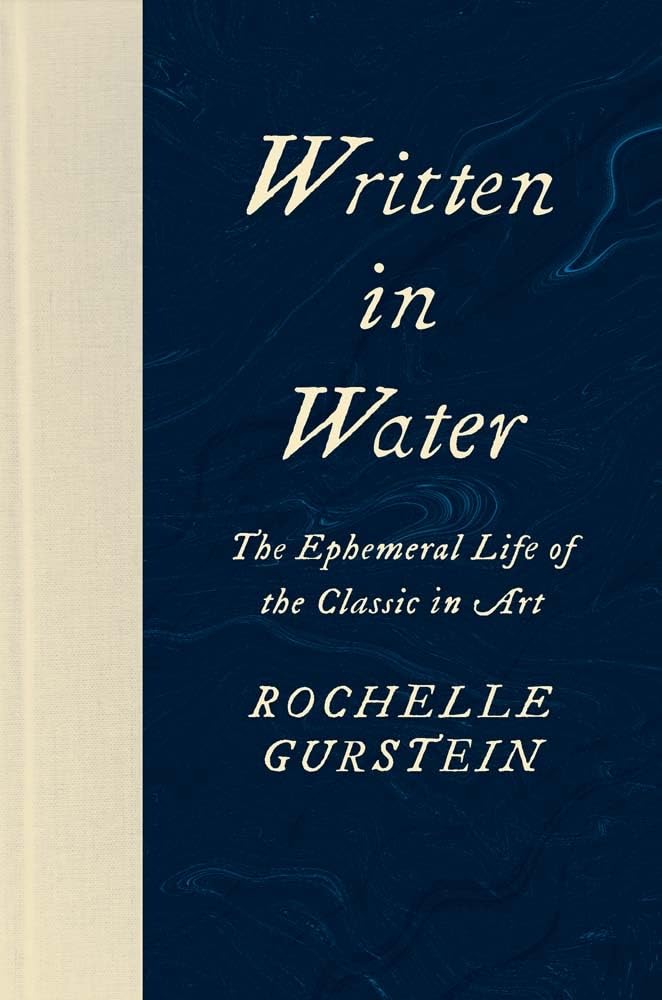
Looking for a good read? Here is a recommendation. I have an unusual approach to reviewing books. I review books I feel merit a review. Each review is an opportunity to recommend a book. If I do not think a book is worth reading, I find another book to review. You do not have to agree with everything every author has written (I do not), but the fiction I review is entertaining (and often thought-provoking) and the non-fiction contain ideas worth reading.
Book Review
The Ephemeral “Timeless” Classic
Reviewed by Mark Lardas
June 1, 2024
Written in Water: The Ephemeral Life of the Classic in Art,” by Rochelle Gurstein, Yale University Press, 2024, 520 pages, $40.00 (Hardcover), $40.00 (E-book)
We all know great art: the Mona Lisa, Michelangelo’s David, the Venus de Milo. It has been ever so. That was what Rochelle Gurstein believed when she began writing a book to define what made a piece of art a timeless classic fifteen years ago. She soon realized that today’s classics were largely ignored in the past. Other pieces of art were proclaimed exemplars.
“Written in Water: The Ephemeral Life of the Classic in Art,” by Rochelle Gurstein is the book that she wrote instead. In it she shows that aesthetics and artistic taste are products of their time. Moreover, the definition of a classic constantly changes.
The result is a fascinating study of art, art history, art criticism, and aesthetics. She investigates the origin of the concept of the timeless classic in art, where it emerged and why. She looks at the changing standards of greatness over time times and analyzes why the changes occur.
She opens examining a statue that in the late18th century proclaimed as the world’s finest example of art: the Venus de Medici. Today it is almost forgotten, surpassed by the Venus de Milo. (Ironically Venus de Milo was sent to the Louvre as a consolation prize after the French returned the looted Venus de Medici to Florence after Napoleon’s defeat.) Gurstein and her husband personally viewed Venus de Medici. They could not understand why it was once considered great. It seemed pedestrian to them.
This led Gurstein on a quest to understand why this happens. In it she examines 300 years of art criticism to discover what determined greatness and how and why that definition changed over the centuries. She also reveals origins of various tropes associate with artists: the unappreciated genius sacrificing for art, the “mad” artist, and the various formal schools that held there way was the one true way. She also shows when art became viewed as transcending ordinary work, with workaday artists like Dutch masters considered inferior because they painted for pay, instead of love of art and creating eternal messages.
While Gurstein failed in her quest to define was makes timeless art timeless, she succeeded in writing a worthwhile and thought-provoking book. Her exploration of the world of art takes readers on a fascinating journey. Whether readers agree with Gurstein’s conclusions or not, “Written in Water” is well worth reading. It will make readers look at art a new way.
Mark Lardas, an engineer, freelance writer, historian, and model-maker, lives in League City. His website is marklardas.com.